
The Enchanting Alsace Wine Route: A Journey through Vineyards and Villages
Discover the Alsace Wine Route: a scenic journey through France's charming villages, historic vineyards, and world-renowned wineries.
The Alsace Wine Route in France is a magical journey through one of the country's most picturesque regions. Stretching over 170 kilometers, this legendary route takes you through charming medieval villages, rolling vineyards, and scenic landscapes. Each village along the route has its own unique charm, with half-timbered houses, cobblestone streets, and vibrant flower displays. The region is renowned for its exceptional wines, particularly white wines such as Riesling, Pinot Gris, and Gewürztraminer. Visitors can enjoy wine tastings at numerous family-run wineries, where they can learn about the winemaking process and savor the flavors of the region's finest offerings. The Alsace Wine Route is also home to several wine festivals throughout the year, providing a festive atmosphere and a chance to immerse yourself in local traditions. In addition to its wine heritage, Alsace boasts a rich cultural and historical tapestry. Many of the villages are home to centuries-old churches, castles, and museums that tell the story of the region's past. The Alsace Wine Route offers not only a feast for the palate but also a feast for the eyes and soul, making it a must-visit destination for any traveler.
Local tips in Alsace Wine Route
- Visit in late spring or early autumn for the best weather and fewer crowds.
- Rent a bike to explore the route at your own pace and enjoy the scenic views.
- Don't miss the wine festivals; they offer a unique cultural experience.
- Book wine tastings in advance, especially during peak season.
- Try the local cuisine, including tarte flambée and choucroute garnie, to complement your wine tasting experience.
The Enchanting Alsace Wine Route: A Journey through Vineyards and Villages
The Alsace Wine Route in France is a magical journey through one of the country's most picturesque regions. Stretching over 170 kilometers, this legendary route takes you through charming medieval villages, rolling vineyards, and scenic landscapes. Each village along the route has its own unique charm, with half-timbered houses, cobblestone streets, and vibrant flower displays. The region is renowned for its exceptional wines, particularly white wines such as Riesling, Pinot Gris, and Gewürztraminer. Visitors can enjoy wine tastings at numerous family-run wineries, where they can learn about the winemaking process and savor the flavors of the region's finest offerings. The Alsace Wine Route is also home to several wine festivals throughout the year, providing a festive atmosphere and a chance to immerse yourself in local traditions. In addition to its wine heritage, Alsace boasts a rich cultural and historical tapestry. Many of the villages are home to centuries-old churches, castles, and museums that tell the story of the region's past. The Alsace Wine Route offers not only a feast for the palate but also a feast for the eyes and soul, making it a must-visit destination for any traveler.
When is the best time to go to Alsace Wine Route?
Iconic landmarks you can’t miss
La Petite Venise
Experience the enchanting beauty of La Petite Venise, a historical gem in Colmar known for its canals, colorful houses, and vibrant culture.

Château de Kaysersberg
Explore the historic Château de Kaysersberg, where medieval architecture meets stunning vineyard views in the heart of Alsace.
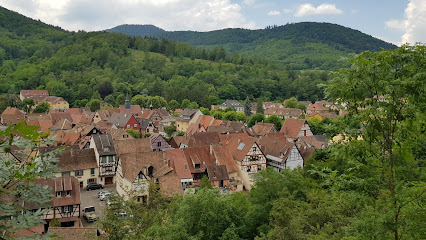
Musée Lalique
Experience the elegance of glass artistry at Musée Lalique in Wingen-sur-Moder, where the legacy of René Lalique comes to life through stunning exhibits.

The Three Castles of Eguisheim
Explore the Three Castles of Eguisheim, a historical treasure in Alsace, offering breathtaking views and a glimpse into medieval life.

Cave Historique des Hospices de Strasbourg
Explore the rich history of winemaking at the Cave Historique des Hospices de Strasbourg, where tradition meets exquisite flavors.

Ophorus Day Trips & Wine Tours in Alsace
Explore the enchanting Alsace region with Ophorus Day Trips & Wine Tours, where captivating experiences await every traveler.

Crémant and Alsace wines Arthur Metz
Experience the rich tradition of Alsace winemaking at Arthur Metz, a premier destination for Crémant and Alsace wines in the heart of Marlenheim.

Cave de Ribeauvillé
Explore the enchanting Cave de Ribeauvillé, a premier wine cellar in Alsace, offering exquisite wines and a rich cultural heritage.
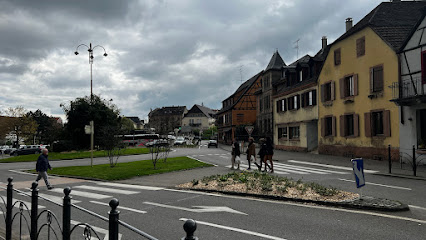
One City Tours - Visite de Strasbourg à Segway
Experience the charm of Strasbourg like never before with One City Tours' exhilarating Segway tours through the city's historic streets and landmarks.

Castle Wineck
Explore the medieval charm and breathtaking vistas of Castle Wineck in the heart of Alsace, where history and beauty come together.

Domaine Joseph Gruss & Son (Fine Wines of Alsace)
Explore the rich heritage of Alsace winemaking at Domaine Joseph Gruss & Son, where exquisite wines and picturesque landscapes await.

Domaine Martin JUND
Explore the organic wine experience at Domaine Martin JUND, a charming winery in Colmar, France, where tradition meets sustainability.

Domaine Jean Sipp
Experience the essence of Alsace at Domaine Jean Sipp, where exquisite wines meet breathtaking vineyard views in Ribeauvillé.

Wines of Alsace HORCHER
Discover the charm of Alsace's wine culture at Wines of Alsace HORCHER, a family-run winery offering exquisite tastings in a stunning vineyard setting.

The Fishmonger District
Discover the enchanting Fishmonger District in Colmar, where medieval charm meets delightful culinary experiences along picturesque canals.

Unmissable attractions to see
Écomusée d'Alsace
Explore Alsace's cultural heritage at the Écomusée d'Alsace, an immersive open-air museum showcasing the region's rich history and traditions.

Château de Kaysersberg
Discover the enchanting Château de Kaysersberg, a historical castle offering breathtaking views and rich heritage in the heart of Alsace.

Sanctuary of Mont Saint-Odile
Experience the serene beauty and historical significance of the Sanctuary of Mont Saint-Odile, a breathtaking landmark in the Vosges mountains of Alsace.

Chemin des Cimes Alsace
Discover the breathtaking heights of Chemin des Cimes Alsace, where nature and adventure meet in a spectacular treetop experience.

Musée Lalique
Explore the enchanting world of René Lalique at Musée Lalique in Wingen-sur-Moder—where art and history come together in stunning glass masterpieces.

Cave Historique des Hospices de Strasbourg
Explore the Cave Historique des Hospices de Strasbourg, a historic wine cellar that offers a unique glimpse into Alsace's rich winemaking heritage.

Tourist Office of Colmar
Explore Colmar's rich history and picturesque beauty from the Tourist Office, your essential hub for local insights and travel guidance.

Abbey of Murbach
Experience the serene ambiance and historical charm of the Abbey of Murbach in the heart of Alsace, France, a perfect retreat for tourists.

Musée Mémorial des combats de la Poche de Colmar
Explore the fascinating history of the Colmar Pocket at the Musée Mémorial des Combat de la Poche de Colmar, a local gem in Turckheim.

La Maison des Têtes - Relais & Châteaux - Hôtel Colmar & Restaurants
Experience the elegance of Alsace at La Maison des Têtes, where fine French dining meets luxurious accommodations in the heart of Colmar.

Maison Pfister
Explore the architectural wonder of Maison Pfister in Colmar, a historical landmark that showcases the beauty of Alsatian heritage.

Musée du Dolder
Discover the rich heritage of Alsace at Musée du Dolder, a historical museum in the enchanting village of Riquewihr.

Cave Vinicole de Cleebourg
Explore the beauty of Alsace at Cave Vinicole de Cleebourg, where tradition meets exquisite wine tasting experiences in a stunning vineyard setting.

Castle Wineck
Explore Castle Wineck, a captivating medieval fortress in Alsace, revealing rich history, stunning views, and a glimpse of the region's cultural heritage.

Sylvie Fahrer & Son
Explore Sylvie Fahrer & Son Vineyard in Alsace for exceptional wines, scenic views, and an authentic winemaking experience amidst beautiful landscapes.

Essential places to dine
Auberge de l'Ill
Experience exquisite French cuisine at Auberge de l'Ill, an iconic fine dining destination in beautiful Alsace.

WISTUB BRENNER
Experience authentic Alsatian cuisine at Wistub Brenner in Colmar, where traditional flavors meet warm hospitality.

Bratschall Manala
Discover authentic Alsatian flavors at Bratschall Manala in Kaysersberg – where every dish tells a story.

Caveau Saint-Pierre
Experience authentic Alsatian cuisine at Caveau Saint-Pierre in Colmar—where tradition meets flavor in a cozy setting.

La Grappe d'Or - Riquewihr
Experience authentic French cuisine at La Grappe d'Or in Riquewihr – where tradition meets culinary excellence amidst stunning Alsatian scenery.

Au Vieux Couvent
Discover culinary excellence at Au Vieux Couvent in Rhinau – a premier destination for gourmet French cuisine infused with modern flair.

L'Alchémille
Discover L'Alchémille: A premier fine dining destination in Kaysersberg offering exquisite French cuisine and an extensive wine selection.

Taverne Alsacienne
Experience the best of Alsatian cuisine at Taverne Alsacienne in Ingersheim – where family-friendly dining meets authentic French flavors.

Restaurant A la Porte Haute
Discover authentic French cuisine at Restaurant A la Porte Haute in Kaysersberg – where tradition meets flavor in a cozy setting.

Restaurant Frankenbourg
Experience exquisite Haute French cuisine at Restaurant Frankenbourg in La Vancelle, where culinary artistry meets local charm.

Au Vieux Porche
Experience authentic Alsatian cuisine at Au Vieux Porche in Eguisheim, where every dish is crafted with love and local ingredients.

Côté Vigne Restaurant
Experience exquisite French cuisine at Côté Vigne, where tradition meets innovation in the heart of Kaysersberg.

Caveau du Schlossberg
Discover the flavors of Alsace at Caveau du Schlossberg, where authentic French cuisine meets charming ambiance in Kaysersberg.

Restaurant Julien Binz
Discover the exquisite flavors of Haute French cuisine at Restaurant Julien Binz in Ammerschwihr – a fine dining experience like no other.

Winstub La Taverne
Experience authentic Alsatian cuisine at Winstub La Taverne in Colmar - where tradition meets taste.

Markets, malls and hidden boutiques
Cattin - Great Wines & Crémant d'Alsace
Explore the exquisite wines of Cattin in Alsace, where tradition meets breathtaking landscapes for an unforgettable tasting experience.

VINUM Colmar | Vins & Spiritueux | Caviste
Explore VINUM Colmar, an exquisite wine cellar offering a delightful selection of Alsatian wines and spirits in the heart of Colmar.
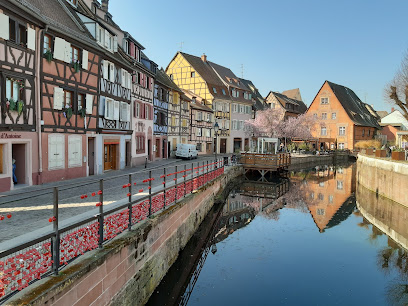
Crémant and Alsace wines Arthur Metz
Discover the finest Crémant and Alsace wines at Arthur Metz Winery, a charming destination in the heart of Alsace's picturesque vineyards.

Wolfberger - Cave Eguisheim
Explore the exquisite wines of Wolfberger - Cave Eguisheim, a historic winery nestled in the stunning Alsatian countryside, offering tastings and tours.
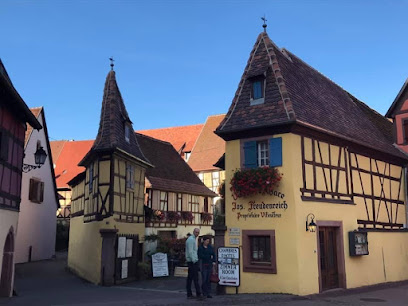
Au Péché Vigneron - vins fins et Crémants d'Alsace ZEYSSOLFF
Experience the finest Alsace wines and local delicacies at Au Péché Vigneron, a delightful winery in Gertwiller, France.

Domaine Pierre Adam | Vins d'Alsace
Discover the exquisite wines and stunning landscapes of Domaine Pierre Adam, a premier Alsatian vineyard perfect for wine lovers and travelers.

Wolfberger Boutique Colmar
Explore Wolfberger Boutique in Colmar for a unique wine tasting experience, showcasing the finest Alsatian wines and local delicacies.

Domaine Gueth - Vins d'Alsace Bio, oenotourisme et chambre d'hôtes, aire camping-car
Discover Domaine Gueth: A picturesque winery in Alsace offering organic wines, cozy accommodations, and unforgettable oenotourism experiences.

Oenosphère
Discover the essence of Alsatian wine culture at Oenosphère, a premier wine store and bar in the heart of Strasbourg, featuring exquisite selections and tastings.
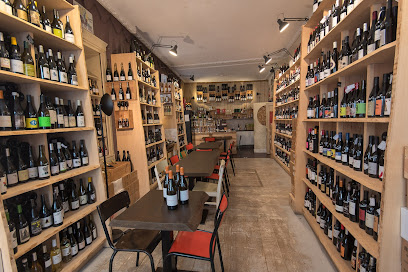
Roi des Vins Colmar
Experience the best of Alsatian wines and gourmet delights at Roi des Vins, your premier wine store in Colmar, France.

Frey Sohler
Discover the finest selection of wines and spirits at Frey Sohler in Scherwiller, where local expertise meets exceptional quality.

La Sommeliere
Discover the finest selection of Alsatian wines at La Sommeliere, where tradition meets expertise in the heart of Colmar.
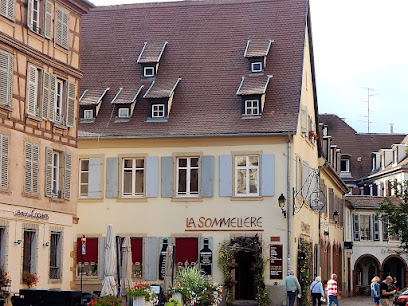
Au Vieux Pignon
Discover authentic Alsatian gifts and souvenirs at Au Vieux Pignon, a historical gem in the heart of Colmar, showcasing the region's rich culture and heritage.

Vinothèque Colmar Nord
Explore Vinothèque Colmar Nord - your premier destination for exquisite Alsace wines and local liquors in the heart of Colmar.

Wine Estate of the city of Colmar
Explore the enchanting Wine Estate of Colmar, where exquisite Alsace wines meet rich heritage and stunning landscapes for an unforgettable experience.

Essential bars & hidden hideouts
Jeannette and the Cycleux
Experience the vibrant atmosphere and culinary delights of Jeannette and the Cycleux, a cocktail bar and bistro in Strasbourg, France.

The 3 Monkeys
Discover The 3 Monkeys in Colmar: a charming pub with a vibrant atmosphere, diverse drinks, and a taste of local culture.

Les Incorruptibles
Discover the vibrant ambiance and delightful drinks at Les Incorruptibles, a charming bar in the heart of Colmar, offering a taste of local life.

Le Douanier
Immerse yourself in the vibrant cocktail culture at Le Douanier, a must-visit bar in Strasbourg known for its exquisite drinks and lively ambiance.

L'Alchimiste
Discover the enchanting L'Alchimiste bar in Strasbourg, where exquisite cocktails and vibrant nightlife await in a charming atmosphere.

Le Cercle Des Aromes
Experience the essence of Alsace with exquisite wines and traditional dishes at Le Cercle Des Aromes in charming Colmar.

Ill Vino • Bar
Discover Ill Vino, the premier wine bar in Strasbourg, where fine wines meet a cozy atmosphere for a perfect evening out.
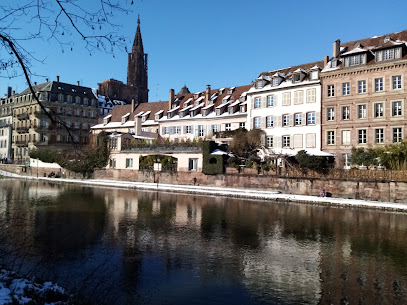
Black & Wine
Experience the charm of Strasbourg at Black & Wine, where exquisite wines and delightful French cuisine come together in a cozy atmosphere.

Bar Elsass Faller Edouard
Experience the Best of Alsatian Cuisine and Wines at Bar Elsass Faller Edouard in Sélestat.

L’Un des Sens | Assiettes gourmandes et canons à partager au bar à vin intimiste du vieux Colmar
Experience the best of Alsatian cuisine and fine wines at L’Un des Sens, a cozy wine bar in the heart of Colmar.

L'Alsace à Boire
Savor the finest Alsatian wines in a cozy setting at L'Alsace à Boire, a must-visit wine bar in Strasbourg.

Bra'V, La Brasserie du Vignoble à Riquewihr
Experience the essence of Alsace at Bra'V, La Brasserie du Vignoble, where gourmet tapas and local brews create unforgettable moments in Riquewihr.

MANNALA PILS
Experience the vibrant charm of Mannala Pils, a premier bar in Colmar, France, known for its craft drinks and lively atmosphere.

Rhum N' Co
Experience the lively atmosphere of Rhum N' Co, Colmar's premier cocktail bar, where exquisite drinks and tapas await in a vibrant setting.
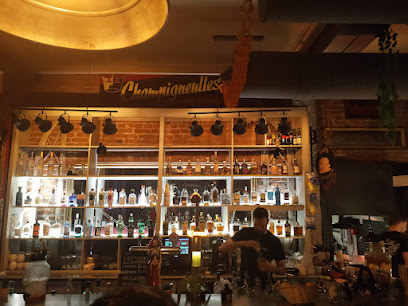
DEER AND BEER
Discover the charm of Colmar at Deer and Beer, where local brews and a cozy atmosphere create the perfect retreat for tourists.

Local Phrases about Alsace Wine Route
-
- HelloHallo
[ha-lo] - GoodbyeAuf Wiedersehen
[ow-f vee-der-zay-en] - YesJa
[yah] - NoNein
[nine] - Please/You're welcomeBitte
[bit-te] - Thank youDanke
[dan-kuh] - Excuse me/SorryEntschuldigung
[ent-shool-di-gung] - How are you?Wie geht's?
[vee gayts] - Fine. And you?Gut. Und dir?
[goot. oont deer] - Do you speak English?Sprechen Sie Englisch?
[shpre-khen zee eng-lish] - I don't understandIch verstehe nicht
[ikh fer-shtay-uh nikht]
- HelloHallo
-
- I'd like to see the menu, pleaseIch möchte bitte die Speisekarte sehen
[ikh merkhte bit-te dee shpize-kar-teh zay-en] - I don't eat meatIch esse kein Fleisch
[ikh es-se kine flysh] - Cheers!Prost!
[prohst] - I would like to pay, pleaseIch möchte bitte zahlen
[ikh merkhte bit-te tsah-len]
- I'd like to see the menu, pleaseIch möchte bitte die Speisekarte sehen
-
- Help!Hilfe!
[hil-feh] - Go away!Geh weg!
[geh vehg] - Call the Police!Rufen Sie die Polizei!
[roo-fen zee dee po-lee-tsy] - Call a doctor!Rufen Sie einen Arzt!
[roo-fen zee igh-nen ahrts] - I'm lostIch habe mich verirrt
[ikh hah-buh meekh feh-reert] - I'm illIch bin krank
[ikh been krunk]
- Help!Hilfe!
-
- I'd like to buy...Ich möchte ... kaufen
[ikh merkhte ... kow-fen] - I'm just lookingIch schaue nur
[ikh show-eh noor] - How much is it?Wie viel kostet es?
[vee feel kos-tet es] - That's too expensiveDas ist zu teuer
[dahs ist tso toy-er] - Can you lower the price?Können Sie den Preis senken?
[kew-nen zee den prees zen-ken]
- I'd like to buy...Ich möchte ... kaufen
-
- What time is it?Wie spät ist es?
[vee shpet ist es] - It's one o'clockEs ist ein Uhr
[es ist ine oor] - Half past (10)Halb zehn
[halb tsayn] - MorningMorgen
[mohr-ghen] - AfternoonNachmittag
[nahk-mit-tahk] - EveningAbend
[ah-bent] - YesterdayGestern
[geh-stern] - TodayHeute
[hoi-teh] - TomorrowMorgen
[mohr-ghen] - 1Eins
[ines] - 2Zwei
[tsvai] - 3Drei
[dry] - 4Vier
[feer] - 5Fünf
[foontf] - 6Sechs
[zeks] - 7Sieben
[zee-ben] - 8Acht
[akt] - 9Neun
[noyn] - 10Zehn
[tsayn]
- What time is it?Wie spät ist es?
-
- Where's a/the...?Wo ist ...?
[vo ist] - What's the address?Was ist die Adresse?
[vas ist dee ah-dreh-suh] - Can you show me (on the map)?Können Sie mir das zeigen (auf der Karte)?
[kew-nen zee meer das tsie-gen (ouf dare kar-teh)] - When's the next (bus)?Wann kommt der nächste (Bus)?
[vann kommt der nek-steh (boos)] - A ticket (to ....)Eine Fahrkarte (nach ...)
[ine fahr-kar-teh (nak)]
- Where's a/the...?Wo ist ...?
History of Alsace Wine Route
-
The Alsace Wine Route, or 'Route des Vins d'Alsace', was officially established in 1953 to promote the region's rich viticultural heritage. Stretching over 170 kilometers from Marlenheim to Thann, the route traverses picturesque villages, vineyards, and historic sites, showcasing the unique terroirs and grape varieties that define Alsatian wine.
-
Viticulture in Alsace dates back to Roman times, around the 2nd century AD, when the Romans recognized the region's potential for wine production. They introduced vine cultivation and winemaking techniques, laying the foundation for centuries of viticulture. Remnants of Roman villas and artifacts can still be found in the region, highlighting the deep historical roots of wine culture in Alsace.
-
During the Middle Ages, Alsace's vineyards were largely managed by monasteries and religious orders. Monks meticulously cultivated vines and produced wine, which was used for religious ceremonies and trade. Notable establishments like the Abbey of Murbach and the Abbey of Marbach played significant roles in developing the region's viticulture, contributing to the high quality and diversity of wines.
-
The Thirty Years' War (1618-1648) had a profound impact on Alsace, including its vineyards. The region suffered extensive destruction and depopulation, leading to a decline in wine production. However, in the aftermath, efforts were made to revive the vineyards and restore the wine industry. This period of recovery laid the groundwork for the flourishing viticulture that followed in subsequent centuries.
-
In the late 19th century, Alsace's vineyards faced a devastating challenge with the arrival of the phylloxera epidemic. This vine-destroying insect led to widespread destruction of vineyards across Europe, including Alsace. Vintners responded by grafting French grapevines onto resistant American rootstocks, a practice that helped save the region's wine industry and modernize its viticultural practices.
-
Alsace's strategic location led to significant upheaval during the World Wars. The region changed hands between France and Germany several times, impacting the local wine industry. Post-World War II, Alsace was reintegrated into France, and efforts were made to rebuild and modernize the vineyards. The creation of the Alsace Wine Route in the 1950s was part of these revitalization efforts, promoting tourism and the region's unique wines.
-
In 1962, Alsace wines were granted the Appellation d'Origine Contrôlée (AOC) status, recognizing their unique quality and geographical origin. This designation has helped preserve traditional winemaking techniques while encouraging innovation. Today, Alsace is renowned for its diverse range of white wines, including Riesling, Gewürztraminer, and Pinot Gris, celebrated for their purity, complexity, and expression of terroir.
-
The Alsace Wine Route is not only about wine but also about the rich cultural heritage of the region. Numerous wine festivals, such as the Foire aux Vins d'Alsace in Colmar, celebrate the region's viticultural traditions. These events offer visitors a chance to experience local cuisine, music, and customs, making the Alsace Wine Route a vibrant destination that honors its historical and cultural legacy.
Alsace Wine Route Essentials
-
The Alsace Wine Route is located in the Alsace region of northeastern France. The nearest international airport is Strasbourg Airport (SXB), which is well-connected to major European cities. Alternatively, you can fly into EuroAirport Basel-Mulhouse-Freiburg (MLH/BSL), which serves the tri-national area of France, Germany, and Switzerland. From either airport, you can rent a car or take a train to reach the starting points of the Alsace Wine Route, such as Marlenheim in the north or Thann in the south. TGV trains from Paris to Strasbourg are also a convenient option, with travel times of around 2 hours.
-
While a car is the most convenient way to explore the Alsace Wine Route, it's not the only option. Many towns along the route are accessible by regional trains and buses. Car rentals are available at major airports and train stations. For those who prefer not to drive, guided tours and bike rentals are also popular options. The region is very bike-friendly, with numerous cycling paths connecting the picturesque villages. Public transportation, including buses and trains, can be used to travel between larger towns, but service may be limited in smaller villages.
-
The official currency in France is the Euro (EUR). Credit and debit cards are widely accepted in hotels, restaurants, and shops along the Alsace Wine Route. However, it is advisable to carry some cash, especially when visiting smaller villages and family-owned wineries, where card payments may not be accepted. ATMs are available in most towns, but it’s a good idea to withdraw sufficient cash in larger towns like Strasbourg or Colmar before heading to more rural areas.
-
The Alsace Wine Route is generally a very safe destination for tourists. However, as with any travel destination, it is wise to take standard precautions. Petty crime such as pickpocketing can occur, particularly in crowded areas and tourist hotspots like Strasbourg and Colmar. Avoid walking alone at night in unfamiliar areas and keep an eye on your belongings. There are no specific high-crime areas targeting tourists, but staying vigilant and aware of your surroundings is always a good practice.
-
In case of emergency, dial 112, the European emergency number, for immediate assistance. This number will connect you to police, fire services, and medical assistance. Major towns along the Alsace Wine Route, such as Strasbourg and Colmar, have hospitals and medical facilities. Pharmacies are widely available in towns and villages for minor health issues. It is recommended to have travel insurance that covers medical emergencies. Keep emergency contact numbers and your insurance details handy.
-
Fashion: Do dress comfortably and in layers, as the weather can change quickly. Smart casual attire is appropriate for winery visits. Don’t wear overly casual clothing like beachwear when dining out. Religion: Do respect local customs, especially when visiting churches and cathedrals. Public Transport: Do validate your ticket before boarding trains and buses. Don’t be loud or disruptive on public transport. Greetings: Do greet people with a friendly 'Bonjour' (Good day) or 'Bonsoir' (Good evening). A light handshake is common. Eating & Drinking: Do try local delicacies and wines. Don’t forget to say 'Santé!' (Cheers) when toasting.
-
To experience the Alsace Wine Route like a local, visit the smaller, family-run wineries where you can often meet the winemakers. Participate in local wine festivals, such as the Fête du Vin in Ribeauvillé. Enjoy regional dishes like tarte flambée (flammekueche) and choucroute garnie at traditional winstubs (wine taverns). Take time to explore the charming villages on foot, as many are best appreciated at a leisurely pace. Don’t miss the opportunity to hike or bike through the scenic vineyards and countryside, and be sure to visit local markets for fresh produce and Alsatian specialties.
Trending Landmarks in Alsace Wine Route
-
La Petite Venise
-
Château de Kaysersberg
-
Musée Lalique
-
The Three Castles of Eguisheim
-
Cave Historique des Hospices de Strasbourg
-
Ophorus Day Trips & Wine Tours in Alsace
-
Crémant and Alsace wines Arthur Metz
-
Cave de Ribeauvillé
-
One City Tours - Visite de Strasbourg à Segway
-
Castle Wineck
-
Domaine Joseph Gruss & Son (Fine Wines of Alsace)
-
Domaine Martin JUND
-
Domaine Jean Sipp
-
Wines of Alsace HORCHER
-
The Fishmonger District
Nearby Cities to Alsace Wine Route
-
Things To Do in Freiburg
-
Things To Do in Strasbourg
-
Things To Do in Basel
-
Things To Do in Nancy
-
Things To Do in Zurich
-
Things To Do in Bern
-
Things To Do in Lucerne
-
Things To Do in Thun
-
Things To Do in Stuttgart
-
Things To Do in Remich
-
Things To Do in Interlaken
-
Things To Do in Dudelange
-
Things To Do in Heidelberg
-
Things To Do in Grindelwald
-
Things To Do in Grevenmacher













